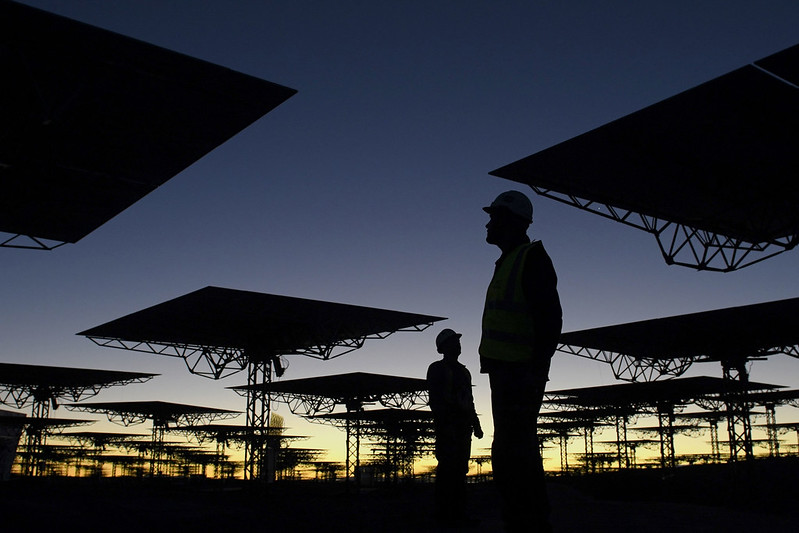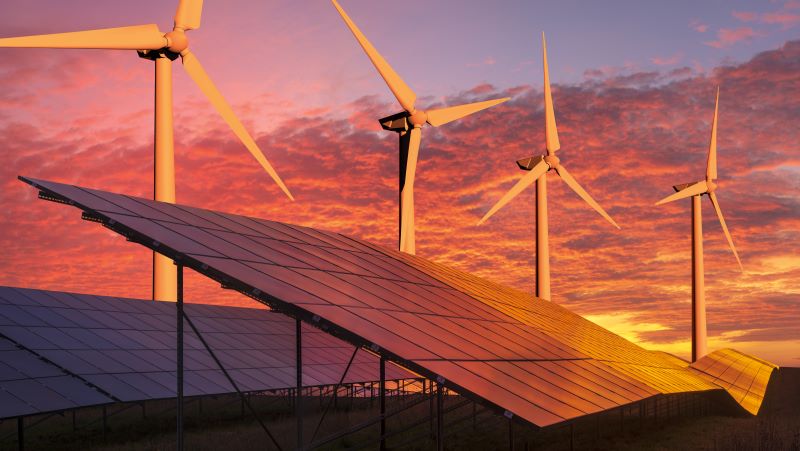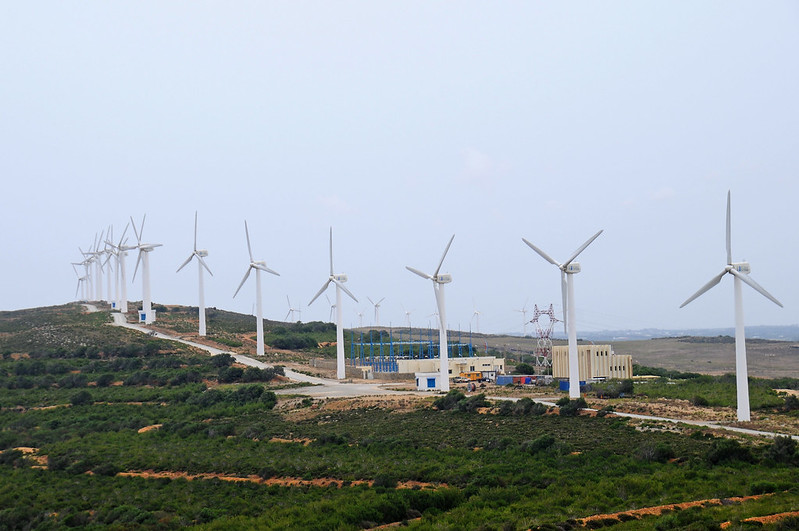Recommended
There is a huge amount of uncertainty when it comes to the effect that climate change will have on people living in low-income countries. Focusing on GDP per capita, the range of estimates over the next fifty years covers magnitudes (and the potential impacts will spread far beyond that measure). But what we do know about how to reduce the impact of climate change emphasizes that this growing threat makes development an even more urgent priority. So, while we should absolutely find far more finance for mitigation to limit greenhouse gas emissions, this should not come at the cost of development finance. There are other sources far better to tap.
Looking at the range of forecasts around the likely impact of climate change on global economic development, economist Bill Nordhaus is at the comparatively sanguine end: he suggests an impact of 4 percent of global GDP in 2100. Simon Dietz and colleagues at the Grantham Institute provide a range of estimates that include many much higher numbers. Among the more worrying ones are those by Burke, Hsiang, and Miguel, who suggest climate change could reduce global GDP by 23 percent compared to a world without rising temperatures in 2100, with a particularly large impact on poorer countries.
Burke and colleagues look at the relationship between past temperature fluctuations and output at the country level to forecast what climate change might mean for output per person going forward. They assume the (nonlinear) impact of temperature on GDP is the same for large changes over the long terms as for small changes over a short periods in the historical data. To feed business-as-usual growth rates into their model, they use the Intergovernmental Panel on Climate Change (IPCC)’s Shared Socioeconomic Pathway fifth scenario (SSP 5). That scenario predicts rapid global growth and convergence and so provides an optimistic baseline forecast for what will happen to low-income economies. They then take the IPCC RCP (Representative Concentration Pathway) 8.5 scenario for forecast temperature change—this is meant to be a ‘business-as-usual’ forecast suggesting what would happen to temperatures over the next century without any efforts to reduce emissions. They combine RCP 8.5 forecasts with their estimate of the relationship between temperature rise and output decline to look at how GDP per capita might change given global warming. The RCP 8.5 scenario predicts rapid climate change, making for large effects of temperature on output going forward. There is much to debate about that scenario, the (optimistic) forecast growth rates, and the paper’s approach. A similar exercise by IMF staff produced some still alarming but less alarming numbers (see also here). But we can consider the result a potential worse-case outcome for poorer countries from the world as a whole doing nothing to curb emissions growth.
Burke, Hsiang, and Miguel helpfully provide data on GDP per capita under SSP 5 and the output of their model allowing for the impact of temperature. Looking at today’s low-income countries (LICs), we can focus in on potential growth without and with climate change up until 2070. Starting with a world without climate change (SSP 5 alone), the perhaps surprising SSP 5 forecast for richest (current) LIC in 2070 is the DR Congo, at $42,663—that’s about the same as the dataset’s predicted income for the US in 2020 and up from the DR Congo’s income of $376 in 2010. Absent the impact of climate change, the median current LIC sees its income rise from $313 in 2010 to $13,391 in 2070 in the SSP5 scenario—or forty-three-fold. That suggests a very optimistic base growth rate compared to historical experience: over the last forty years these countries have only managed to raise incomes per head by 27 percent according to the World Bank.
Next, adjust the SSP growth forecast using RCP 8.5 forecasts for climate change and Burke et. al.’s estimates for the impact of temperature on output to see what climate change might do to low-income country output over the next fifty years. In 2070, DR Congo reaches an income of $17,278 and the median current LIC sees incomes reach $5,094 (with worse to come: some countries see negative growth rates after that point). Again, absent climate change, the SSP 5 scenario suggest LICs will be about 43 times richer in 2070 than 2010. With climate change, a pessimistic take on its impact cuts that down to 16 times richer. The figure below presents Burke et al.s’ income forecasts for low-income countries in their dataset with the red line the median income of the group. Burke and colleagues report that if you assume a lower rate of baseline economic growth but the same level of climate change, their model suggests some countries end up poorer in 2070 than 2010 while more than two fifths of all countries (highly concentrated amongst the poorest) are poorer in 2100.
Figure: Two Forecasts of Future LIC Growth: With and Without Climate Change
Source: Burke, Hsiang, and Miguel
I wish I believed the SSP 5 growth forecast for low-income countries, but I’m pretty sure it is too optimistic (in defense of the SSP process, SSP 5 is the most optimistic scenario). At the same time, I hope I’m right thinking that countries will adapt better to long, slow changes in temperature in the future than they did to rapid, short changes in past temperature that underlie Burke, Hsiang and Miguel’s climate impact estimates. That combination would lead to a forecast of median income in LICs that rises considerably less rapidly at first, but may not taper off or decline so much at the end. Still, the considerable potential impact of climate change on global output and the fact that it will almost certainly have a bigger negative impact on poorer countries than richer ones is ample justification for major global investment in both mitigation and adaptation.
The model also suggests that it is wrong to divert scarce development finance from low-income countries to fund mitigation in those countries or elsewhere. The world’s low-income economies account for 2.5 percent of global greenhouse gas emissions. In the end, the climate crisis will be only be averted by decoupling emissions from output. That will be a technological battle largely won or lost in richer countries long before LICs are a significant source of emissions themselves. And low-income aid funding is a drop in the bucket were it to be diverted to mitigation projects in developing countries—which is slated to cost trillions over the next decade.
But aid fosters development: infrastructure, health, education and economic growth. And low-income countries have small enough economies that aid flows could plausibly have a significant impact on that development. LICs have a combined $458 billion GDP, that compares to about $170 billion for global aid flows.
In turn, development is itself a really important adaptation defense for poorer countries, because it makes them less vulnerable to climate-related hazards and reduces the impact of climate change on poverty. In fact, Burke, Hsiang, and Miguel’s results suggests that if poorer countries do become richer over time, passing today’s global median income, they’d be significantly less susceptible to the impact of higher temperatures. The model estimates that outcome would reduce the worldwide impact of climate change on GDP per person from 23 to 15 percent at century’s end, all because of a smaller impact of climate change in poorer countries.
Low-income countries would be far better off in a world where climate change doesn’t happen. But they’d be even better off in a world where the kind of growth suggested by the SSP 5 scenario does happen. Development aid makes the second more likely, diverting that aid to mitigation efforts will have less than marginal impact on the first.
Meanwhile, there is no evidence that aid has been increased in response to the challenge of climate mitigation and adaptation, and while the share of total aid worldwide directed to low-income countries has increased (to around 30 percent), that’s only $20 billion higher than 2009, or nine cents per person per day in the world’s poorest countries. That’s insufficient to adapt just to the threat of locked-in climate change—which is estimated at $300 billion a year by 2030 for developing countries as a whole.
Burke, Hsiang and Miguel’s results suggest that if we shift aid from development in low-income countries to mitigation in middle income countries, the damage done by climate change in (poorer, less prepared) low-income countries would be even worse. And the worse you think the impact of climate is going to be, the worse it is to divert that aid.
That said, richer countries should be spending far more money on both adaptation and mitigation in middle income countries. Luckily, there are other sources of finance for that than the reverse Robin Hood approach of stealing from the world’s poorest. For example, the US firm Lockheed Martin alone gets $20 billion more in Pentagon defense contracts each year than the total annual amount in the US Build Back Better Act dedicated to climate response. And the UK defense budget increased 5.5 billion pounds between 2020-1, considerably more than the ODA budget was slashed over the same period. There’s money in foreign policy and security budgets to deal with global existential threats and poverty reduction both, it is just a matter of sensible prioritization.
Disclaimer
CGD blog posts reflect the views of the authors, drawing on prior research and experience in their areas of expertise. CGD is a nonpartisan, independent organization and does not take institutional positions.








